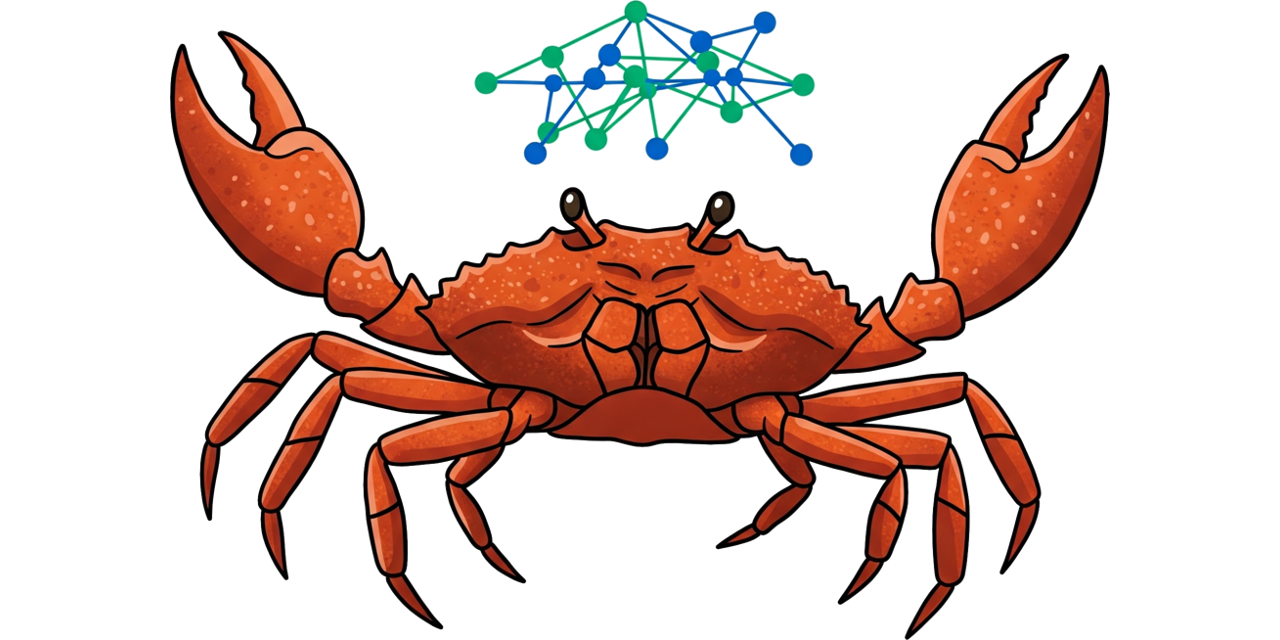
Introduction to Graph API
Graph API is an ergonomic library for working with in memory graphs in Rust that provides a flexible and type-safe way to interact with graph data structures.
Heavily inspired by Apache TinkerPop, it offers an iterator-like interface specifically designed for graph traversal and manipulation.
Overview
This library offers a unified interface for working with different types of graphs while maintaining strong type safety and ergonomic usage patterns. It includes features for graph traversal, modification, and custom extensions.
Advantages
- Iterator-like interface for graphs: Intuitive API that feels familiar to Rust developers
- Works with multiple backends:
- simple graph - A simple adjacency list based graph with index support
- petgraph - An excellent established graph library
- You can also create your own!
- Composable operations: Chain graph operations together in a fluent, declarative style
- Separation of graph model and implementation: Define your domain model once and use it with any supported backend
Key Features
- Type-safe graph operations: Work with graph data in a strongly-typed manner
- Flexible vertex and edge traversal: Explore graph relationships with powerful walker API
- Custom graph implementations support: Adapt to various graph storage backends
- Derive macros for extending graph functionality: Automatically generate boilerplate code
- Comprehensive testing utilities: Including fuzzing support
Example
// Find a person using the username index (exact match)
let bryn = graph
.walk()
.vertices(Vertex::person_by_username("bryn123"))
.first()
.expect("Bryn should exist in the graph");
println!("Found person: {:?}", bryn);
// Find projects created by a person
let projects_created_by_bryn = graph
.walk()
.vertices_by_id(vec![bryn])
.edges(Edge::created().outgoing())
.head()
.collect::<Vec<_>>();
println!("Bryn created {} projects", projects_created_by_bryn.len());
// Find all people followed by Bryn
let followed_by_bryn = graph
.walk()
.vertices_by_id(vec![bryn])
.edges(Edge::follows().outgoing())
.head()
.collect::<Vec<_>>();
println!("Bryn follows {} people", followed_by_bryn.len());
// Find all people with "graph" in their biography
let graph_enthusiasts = graph
.walk()
.vertices(Vertex::person_by_biography("graph"))
.collect::<Vec<_>>();
println!("Found {} graph enthusiasts", graph_enthusiasts.len());
// Find people in a specific age range
let people_in_30s = graph
.walk()
.vertices(Vertex::person_by_age_range(30..40))
.collect::<Vec<_>>();
println!("Found {} people in their 30s", people_in_30s.len());Book Organization
This book is organized into several sections:
- User Guide: How to use the Graph API to work with graph data
- Implementation Guide: How to implement the Graph API traits for your own graph types
- Reference: Detailed information about API components and functionality
- Appendix: Additional resources and reference materials
Whether you're a graph API user or implementing your own graph backend, this book provides comprehensive documentation to help you make the most of the Graph API library.